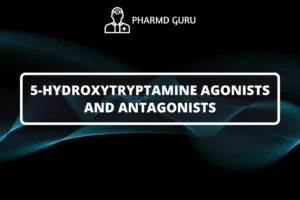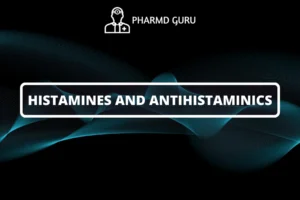Mucolytics are a class of medications used in the management of respiratory conditions characterized by excessive mucus production and impaired mucociliary clearance. These drugs help break down and thin the mucus, making it easier to cough up and clear from the airways. In this article, we will delve into the pharmacology of mucolytics, their mechanisms of action, common types of mucolytics, and their role in promoting respiratory health.
SCROLL DOWN TO THE BOTTOM OF THIS PAGE FOR ACTUAL NOTES.
TABLE OF CONTENTS:
- Introduction
- Mechanisms of Action
- Types of Mucolytics
- Pharmacokinetics
- Therapeutic Applications
- Considerations for Use
Introduction
Mucus plays a crucial role in protecting the respiratory system by trapping inhaled particles and facilitating their removal. However, in certain respiratory conditions, such as chronic bronchitis, cystic fibrosis, and bronchiectasis, excessive mucus production and altered mucus properties can impede the normal clearance mechanisms. Mucolytics help address this issue by modifying the physical properties of mucus, making it less viscous and easier to clear.
Mechanisms of Action
Mucolytics work through various mechanisms to break down and thin the mucus in the airways:
- Disruption of Mucus Structure: Mucolytics disrupt the disulfide bonds that contribute to the cross-linking of mucin proteins in mucus, thereby reducing its viscosity and elasticity.
- Enhanced Water Content: Some mucolytics increase the water content of mucus, promoting hydration and facilitating its clearance.
- Activation of Ciliary Beat Frequency: Mucolytics can stimulate the movement of cilia lining the respiratory tract, which helps propel mucus upwards and out of the airways.
Types of Mucolytics
There are different types of mucolytics available, including:
- N-Acetylcysteine (NAC): NAC is one of the most commonly used mucolytics. It works by breaking disulfide bonds in mucus, reducing its viscosity. NAC is often administered via inhalation or oral routes.
- Dornase Alfa: Dornase alfa is a recombinant human DNase enzyme that specifically targets DNA released by inflammatory cells, thereby reducing the viscosity of mucus in cystic fibrosis.
- Erdosteine: Erdosteine is a mucolytic agent that not only breaks down mucus but also possesses antioxidant and anti-inflammatory properties. It is used in the treatment of chronic bronchitis.
Pharmacokinetics
Mucolytics can be administered through various routes, including inhalation, oral, or intravenous routes, depending on the specific medication. Inhalation is often preferred as it allows direct delivery to the airways, resulting in localized action and minimal systemic side effects.
Therapeutic Applications
Mucolytics have therapeutic applications in respiratory conditions characterized by excessive mucus production and impaired mucociliary clearance, such as:
- Chronic Bronchitis: Mucolytics can help improve symptoms and reduce exacerbations in individuals with chronic bronchitis.
- Cystic Fibrosis: Mucolytics, including dornase alfa, are used as part of a comprehensive treatment approach to facilitate mucus clearance in individuals with cystic fibrosis.
- Bronchiectasis: Mucolytics may be beneficial in bronchiectasis by aiding mucus clearance and reducing the risk of respiratory infections.
Considerations for Use
While mucolytics are generally safe, there are some considerations to keep in mind:
- Proper Technique: Inhalation mucolytics should be administered using the appropriate device and technique to ensure optimal drug delivery.
- Adverse Effects: Mucolytics are generally well-tolerated, but some individuals may experience side effects such as nausea, vomiting, and bronchospasm.
- Drug Interactions: It is important to consider potential drug interactions when using mucolytics alongside other medications. Healthcare providers should be informed of all concurrent medications.
ACTUAL NOTES:




